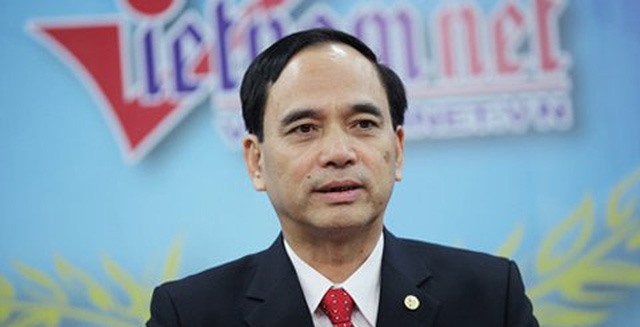 Opinion
Opinion

Dr Phạm Văn Tác, Director of the Personnel Department, under the Ministry of Health, speaks to Sức khỏe & Đời sống (Health and Life) about positive changes that have happened in the course of restructuring the health sector.
 |
| Phạm Văn Tác. — Photo soha.vn |
Dr Phạm Văn Tác, Director of the Personnel Department, under the Ministry of Health, speaks to Sức khỏe & Đời sống (Health and Life) about positive changes that have happened in the course of restructuring the health sector.
Can you tell us what is happening with the reform of public health units while implementing the Party Central Committee Resolution No.6?
Improving staffing in the health sector has been taken as a starting point in the administrative reform process.
The Ministry of Health (MOH) has worked with all government agencies and localities to develop legal documents towards the final objective of providing people with the best healthcare.
The Ministry has already implemented and will continue carrying out the following activities: at departments and general departments at the central level, the number of sub-departments and divisions will be reduced from 94 to 59. As a result, about 105 sub-department leaders will become rank and file officers.
According to the master plan (until 2025 with vision extended to 2030), the health sector will establish the Centre for Disease Control at the national level (CDC), merging functional departments in preventive medicine.
On the other hand, a new agency, the Food, Drug Administration (FDA), will be established, merging three separate units into one.
More such mergers of units with similar functions are being planned.
For the 82 public service units which are under the Health Ministry’s management, 21 of which are hospitals, we will carry out a review in the near future and consider the possibility of transferring management of general hospitals and specialized hospitals located in provinces to provincial authorities. This means that the MOH will only manage Class 1 and specialised hospitals, which will serve as a place for medical students to practise.
What’s about the roadmap for medical establishments at local level?
In 2015, the MOH and the Ministry of Home Affairs jointly issued an inter-ministerial circular stating clearly that for each provincial Department of Health (PDH) there will be one director and three deputy directors, the number of staff in each section will be capped at 7, and there will only be two sub-departments under each PDH.
There will be only one CDC for each province and 6 central units. So under Circular 51 of the MOH, we’ll be able to reduce agencies to some 315 focal points and 1,260 key positions nation-wide. In other words, we’ll be able to save almost VNĐ91 billion ($4 million) per year in paying staff salaries.
By the end of 2017, 52 of 63 provinces and cities nation-wide had created their CDCs and 413 out of 713 district units from 44 provinces and cities have successfully merged the district health centre with the district general hospital.
Have these mergers created any problem?
No problem at all.
If in the past, a job was done by 2-3 different units and managed by 2-3 leaders, now it is under just one person’s management. So we have increased efficiency and saved money.
What about problems in organizational restructuring?
I have to admit that the biggest problem is how leaders can solve the personnel issue in a transparent and accountable manner.
As of now, some 11 provinces have not carried out the restructuring process, but they have already worked out their roadmaps for it.— VNS




